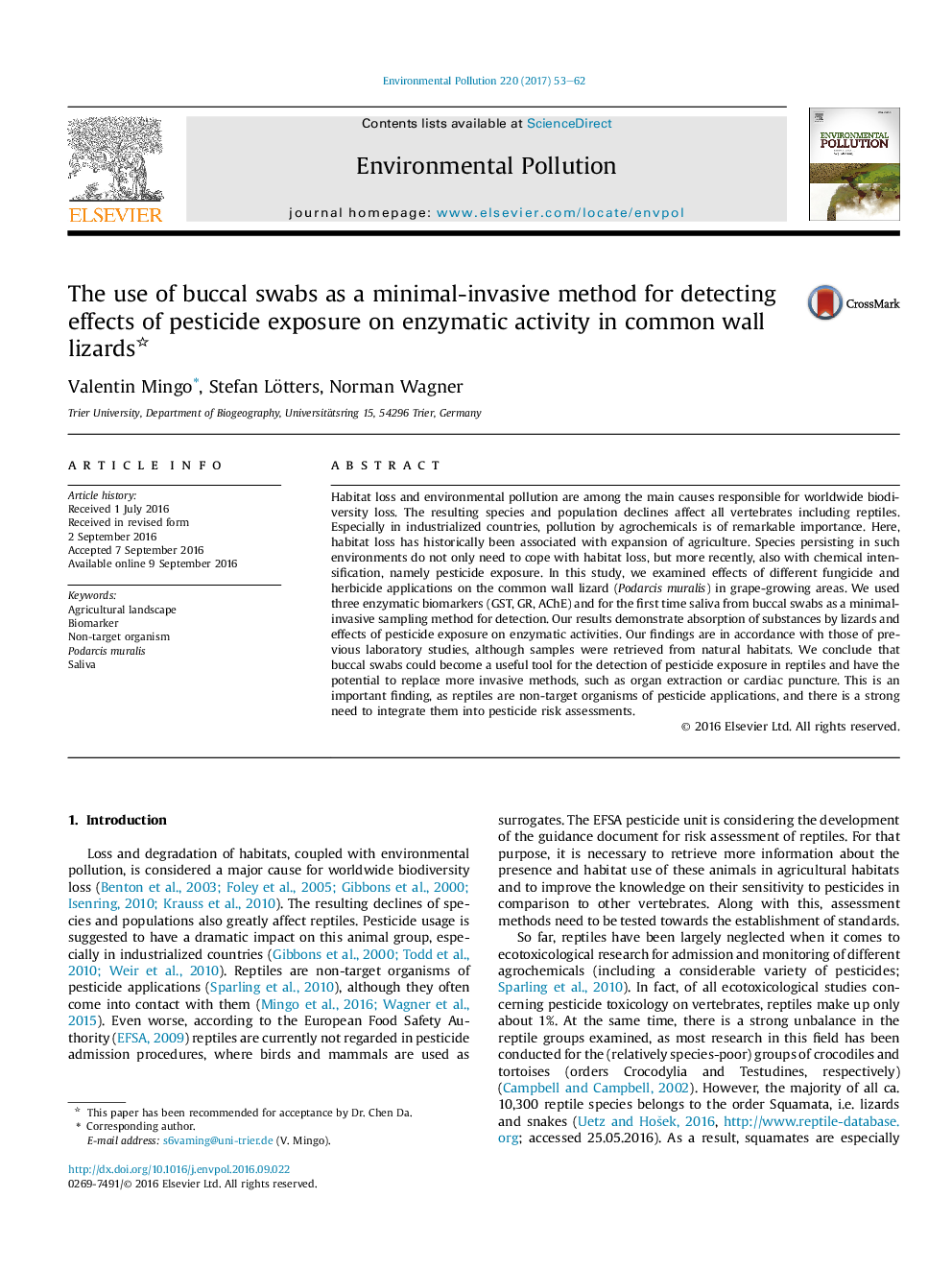| کد مقاله | کد نشریه | سال انتشار | مقاله انگلیسی | نسخه تمام متن |
|---|---|---|---|---|
| 5749196 | 1412476 | 2017 | 10 صفحه PDF | دانلود رایگان |

- Buccal swabs could become a reliable method to detect pesticide exposure in reptiles.
- Biomarker data from wild lizards matches results obtained in laboratory studies.
- Fungicide formulations induced oxidative stress in exposed individuals.
- Reptiles suffer from pesticide uptake, and need to be integrated in risk assessments.
Habitat loss and environmental pollution are among the main causes responsible for worldwide biodiversity loss. The resulting species and population declines affect all vertebrates including reptiles. Especially in industrialized countries, pollution by agrochemicals is of remarkable importance. Here, habitat loss has historically been associated with expansion of agriculture. Species persisting in such environments do not only need to cope with habitat loss, but more recently, also with chemical intensification, namely pesticide exposure. In this study, we examined effects of different fungicide and herbicide applications on the common wall lizard (Podarcis muralis) in grape-growing areas. We used three enzymatic biomarkers (GST, GR, AChE) and for the first time saliva from buccal swabs as a minimal-invasive sampling method for detection. Our results demonstrate absorption of substances by lizards and effects of pesticide exposure on enzymatic activities. Our findings are in accordance with those of previous laboratory studies, although samples were retrieved from natural habitats. We conclude that buccal swabs could become a useful tool for the detection of pesticide exposure in reptiles and have the potential to replace more invasive methods, such as organ extraction or cardiac puncture. This is an important finding, as reptiles are non-target organisms of pesticide applications, and there is a strong need to integrate them into pesticide risk assessments.
226
Journal: Environmental Pollution - Volume 220, Part A, January 2017, Pages 53-62